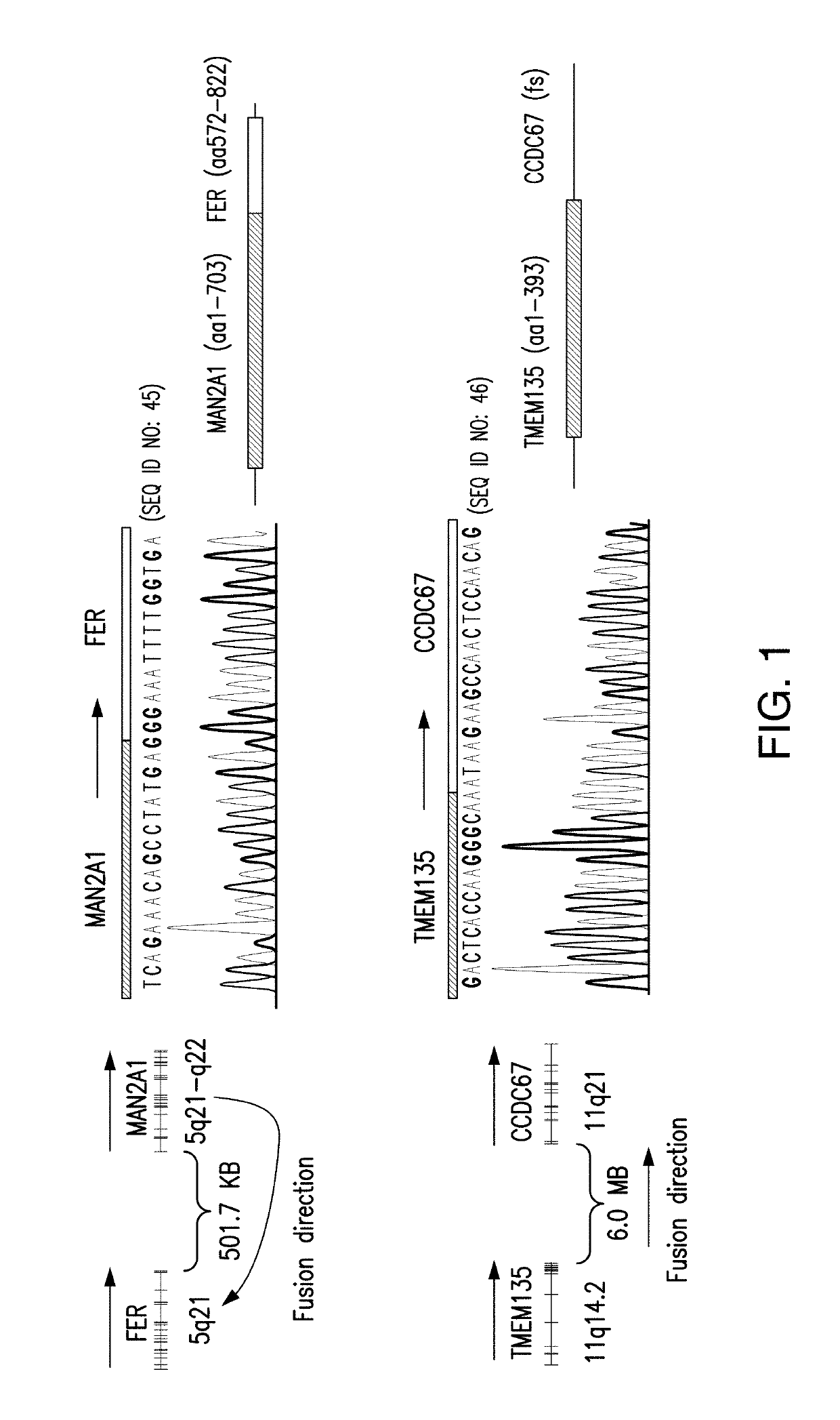Methods for treating cells containing fusion genes
a technology of fusion genes and cells, applied in the direction of transferases, peptide/protein ingredients, drug compositions, etc., can solve the problems of significant overtreatment of the disease, the treatment of prostate cancer, and the problem of metastatic prostate cancer, etc., to promote homologous recombination and insertion of nucleic acids
- Summary
- Abstract
- Description
- Claims
- Application Information
AI Technical Summary
Benefits of technology
Problems solved by technology
Method used
Image
Examples
example 5
10. NOVEL FUSION TRANSCRIPTS ASSOCIATE WITH PROGRESSIVE PROSTATE CANCER
[0221]The analysis of an additional 68 prostate cancer samples by transcriptome sequencing leads to the discovery of 5 additional novel fusion transcripts present in prostate cancer. It is noted that significant number of prostate cancers contained no fusion transcripts in RNA sequencing. Even though extensive transcriptome sequencings were performed on 30 prostate cancer samples that prove non-recurrent for extended period of time, no viable fusion transcripts were identified in these samples using fusion catcher software. These 5 fusion transcripts were validated through Sanger sequencing of the RT-PCR products (FIG. 16). The following primers were used: ACPP-SEC13: 5′-TCCCATTGACACCTTTCCCAC (SEQ ID NO: 30) / 5′-TGAGGCTTCCAGGTACAACAG (SEQ ID NO: 31); CLTC-ETV1: 5′-GCCCAGTTGCAGAAAGGAATG(SEQ ID NO: 32) / 5′-CTTGATTTTCAGTGGCAGGCC (SEQ ID NO: 33); DOCK7-OLR1: 5′-GACTACGTCTCATGCCTTTCC (SEQ ID NO: 34) / 5′-TTCTCATCAGGCTGGT...
PUM
| Property | Measurement | Unit |
|---|---|---|
| OD | aaaaa | aaaaa |
| temperature | aaaaa | aaaaa |
| PSA doubling time | aaaaa | aaaaa |
Abstract
Description
Claims
Application Information
 Login to View More
Login to View More - R&D
- Intellectual Property
- Life Sciences
- Materials
- Tech Scout
- Unparalleled Data Quality
- Higher Quality Content
- 60% Fewer Hallucinations
Browse by: Latest US Patents, China's latest patents, Technical Efficacy Thesaurus, Application Domain, Technology Topic, Popular Technical Reports.
© 2025 PatSnap. All rights reserved.Legal|Privacy policy|Modern Slavery Act Transparency Statement|Sitemap|About US| Contact US: help@patsnap.com



